- Home
- Clive Cussler
The Sea Hunters II: More True Adventures with Famous Shipwrecks Page 9
The Sea Hunters II: More True Adventures with Famous Shipwrecks Read online
Page 9
French puffed on his pipe while he smoothed his beard with his hand. “Where are you from, sailor?”
“Maine, sir,” the young man answered. “Rockport.”
“I imagine you’ve spent some time on the water, then,” French noted.
“Yep,” the seaman answered, “family of fishermen and lobstermen.”
French finished and tapped the dottle over the side into the water.
“I’m going belowdecks. You keep a sharp eye,” he said.
“Aye, sir,” the sailor answered.
Just then a small series of waves from far out in the gulf rocked Richmond and pressed her and Toone together. The sound of the hulls slapping washed across the water like distant thunder.
French climbed back down the ladder and entered his cabin on the Preble. Licking his fingertips, he pressed them against the wick of the lamp and climbed into his berth. Making himself comfortable, he settled in to sleep.
* * *
Lieutenant Warley coughed, then rubbed his watering eyes. The pair of smokestacks were failing to vent the smoke from the boilers. This was just one more problem to add to the many Warley had noticed with Manassas, the first armored warship in North America that would see battle. To begin with, the vessel was proving underpowered, and that was no wonder. The Confederate navy was underbudgeted, and the ironclad’s twin engines — one high-pressure, the other low-pressure — were worn out when they were installed. This was a common problem. The Confederates lacked the funds and the foundries to produce new engines themselves. Nor did the Confederates possess the large and modem shipyards of the Union.
The hull of Manassas came from a New England icebreaker formerly named Enoch Train that had last seen life as a river towboat. A group of enterprising Louisiana businessmen bought Enoch Train, then paid to have her razed at a crude shipyard across the river from New Orleans in Algiers. The ship’s masts and superstructure were cut off, the hull was lengthened and widened, and her bow was extended and rebuilt with solid wood. Then the worn engines and hardware were installed. Next, a convex iron shield backed by wood was built as the upper deck. In the bow, a rounded shuttered port that flipped up was cut and the hole for the smokestack punched through the top. Last but not least, the shipwrights bolted a cast-iron ram to the bow just below the waterline.
They named her Manassas after the site of a recent Confederate army victory.
Then the businessmen applied for a letter of marque and reprisal, a document from the Confederate government giving them the right to sink Union vessels and take their cargoes as prizes.
Their dreams of grandeur above patriotism did not last. Commander George Hollins was in charge of building a fleet of warships to fight the expected fleet of Admiral David Farragut. Needing every vessel he could arm, Hollins sent Warley with a crew from the C.S.S. McRae to seize Manassas for the Confederacy.
The longshoremen aboard the ironclad defied the navy and shouted that they would kill the first man who attempted to board her. Warley, wielding a revolver, called their bluff. Cowed, the longshoremen abandoned the boat, along with one of the owners, who had tears in his eyes when escorted ashore. It was later reported that the Confederate government paid the businessmen $100,000 as compensation for the ship.
* * *
At this instant, Warley was ruing the day he had been assigned her command. To add insult to injury, he was having a great deal of trouble controlling Manassas’s direction. To have steering control, Warley needed to exceed the speed of the current by at least a few miles per hour. Right now Warley was barely creeping downriver.
“Get the engineer,” Warley shouted to a deckhand standing nearby.
The man scampered down a hatch into the engine room. Warley was well known as a stern disciplinarian, and by the sound of his voice he was none too happy. Crouching down to avoid hitting his head, the deckhand crab-walked to the stern, where William Hardy, the ship’s engineer, was applying grease to the shaft leading to the propeller.
“Cap’n wants to see you,” the deckhand shouted over the din.
“Be right up,” Hardy said, wiping his hands on an already greasy piece of burlap.
Straightening his uniform, Hardy ran a wooden comb through his hair, then climbed up the ladder through the port. Walking forward, he saluted Warley.
“You wanted to see me, sir?” Hardy said.
“Yes,” Warley said. “How many inches of steam are we making?”
“About nine, sir,” Hardy noted.
Manassas could make nearly thirty before her boilers would blow.
“Why so little?” Warley asked. “I’m having problems with control.”
“It’s the fuel we loaded,” Hardy noted. “We have some seasoned wood and a half-load of coal — but if I burn that, we won’t have them when we go into battle.”
“So we burn green wood?” Warley said, wiping his nose, which was dripping from the smoke.
“Unless you order me otherwise,” Hardy said easily.
Warley nodded. Hardy was a good man and as fine an officer as he had aboard Manassas. “You made the right choice, William,” he said. “Let’s just hope next time we go out, it will be with a full load of prime fuel.”
“Yes, sir,” Hardy said, “that would be a blessing. For now, however, you have about fifteen more minutes of green wood.”
“Then that’s the way it is,” Warley said, dismissing Hardy with a crisp salute.
Turning the helm over to First Officer Charles Austin, Warley made his way to the bow, where the Manassas’s single nine-inch gun sat pointed downriver. He stared out at the blackness as he drew in breaths of clean air.
The Yankees were out there, and, seasoned wood or not, it was time for the rebels to visit.
The fog was growing thicker around the anchored Union fleet as Manassas steamed downriver. The flotilla was well armed. Richmond was armed with a total of twenty-six guns. The sailing sloop Preble carried seven 32-pound cannon, two 8-inch rifled guns, and a single 12-pounder. Less heavily armed was the steamer Water Witch, which mounted only four small guns. More heavily armed was the sloop Vincennes, which carried a complement of fourteen 32-pounders, twin 9-inch Dahlgren smoothbores, and four 8-inch rifled guns. Because of the late hour, the decks of the Union fleet were quiet.
Engineer Hardy popped his head through the hatch into the pilothouse. “We’re into the good wood. You should feel an improvement.”
Charles Austin at the helm shouted. “I felt the speed pick up a few minutes ago.”
“Good,” Hardy said. “Fear not — when we attack, I have a little trick up my sleeve.”
“I’ll let you know,” Austin shouted after the retreating Hardy.
Manassas was the lead ship of a small Confederate force.
Just behind and off her port side trailed the small Confederate tug Ivy, which had come downriver a few days before. Ivy mounted a new British-made Whitworth rifled gun. The Whitworth was a rare and expensive extravagance for the Confederate navy, effective and well built. The last few days, Ivy had stayed upriver, harassing the Union blockaders by shelling the Union fleet from a distance of nearly four miles.
Calhoun, Jackson, and Tuscarora also left Fort Jackson to travel downriver for the attack. Calhoun was an aging vessel equipped with walking beam engines. Her orders called for her to stay away from action and fire her guns from a distance. Jackson was a newer high-pressure paddle wheeler, but the Confederates were concerned that the noise from her engines and paddle wheels would alert the Union forces, and she was coming downriver last. Tuscarora was a small tug tasked with towing a fire raft the Confederates hoped to use to set the Union fleet ablaze.
Manassas was close to the Union ships. Austin strained to see through the fog.
Frolic, a southern schooner the Union had captured when she tried to run through the blockade with a load of cotton bound for London, was manned by a skeleton crew. She was due to travel north for conversion to a Union vessel in a few more weeks, and only a few men
tasked with maintenance were aboard.
The master of Frolic, a laconic New Yorker named Sean Riley, was having trouble sleeping. The monotony was wearing on Riley, and after tossing and turning in his berth, he finally decided to try the main deck to see if the fresh air would bring sleep. Carrying a thin wool blanket, he headed for the stem to make himself comfortable.
A sound of tapping reached his ears. Maybe it was a woodpecker, Riley thought. No, not a woodpecker — the tapping had a distinctly metallic tone. Must be from Richmond, which was anchored nearby. Riley climbed into the riggings to investigate.
* * *
“I saw a dim outline ahead,” Warley said to Austin, after returning from the gun port. “I have no idea if it’s a Federal vessel, but she’s slightly to port.”
Austin adjusted the wheel, then peered from the tiny port into the gloom.
* * *
“What in God’s name,” Riley blurted aloud.
A blackened leviathan from the depths was quickly approaching. If not for the round smokestack and noise, the unknown object might have been a whale that had lost its bearings and traveled from the Gulf of Mexico upriver. Like a hunter stalking prey, the black object was advancing on Richmond.
The time was 3:40 A.M.
Sliding down a line, Riley began ringing Frolic’s bell. Then he shouted across the water. “Ahoy, Richmond, there’s a boat coming down the river.”
Over the sound of the bunkers being loaded, no one on Richmond heard his pleas.
Riley ran into the pilothouse to find an aerial flare.
* * *
“Enemy dead ahead,” Austin shouted down the hatch to Hardy.
“Now’s the time, boys,” Hardy yelled to his engine-room crew.
Opening the door to the firebox, the black gang took turns tossing kegs of tar, turpentine, tallow, and sulfur into the flames. Almost immediately, the steam gauge began creeping higher. At the helm, Austin felt Manassas surge forward.
* * *
On Preble, a midshipman saw Manassas advancing. He ran to warn Commander French. A few moments later, French appeared on deck in his long underwear. The Confederate ram was only twenty yards from Richmond—there was no time to give warning.
The explosive fuel tossed into Manassas’s firebox gave the vessel speed but also raised the temperature inside the vessel. The crew of the ram was covered in sweat, and their heads were swimming from the heat. One crewman began to sing “Dixie.” The rest of the sailors quickly followed suit.
Inside Manassas, it became chaos. The sailors were singing at the top of their lungs, the Union ships were sounding their warnings, and the vibration of the propeller shaft through the deck was making Austin’s feet numb. He peered through the tiny port at the vessel looming above.
They were ten yards from Richmond when Riley’s flare streaked skyward.
“Fire the gun,” Warley shouted to the gun captain.
The shot from the cannon struck the side of Joseph H. Toone and exited from the other side. Then Richmond’s bell began to ring the call to arms. In the confusion, Austin never hesitated in his advance and never deviated from his course. Hands firmly on the wheel, he steered Manassas directly into the side of Toone. The cast-iron ram performed as designed. It parted the planks of the frigate like a knife through the belly of a fish. The ram wedged between a pair of thick ribs two feet below the waterline. Water poured into the hull through a six-inch gash.
Fortunately, it was not a fatal blow.
* * *
On board Manassas, Austin touched the tip of his fingers to his forehead. When he brought them away and into the light, he could see red. At impact his head had slammed into a bulkhead and opened a cut. He dabbed at the wound with his handkerchief. Later he could tend to the wound — right now it was time to make another run at the Union ship.
“Full astern,” he shouted down the hatch to Hardy.
In Manassas’s engine room, one of the condensers had sprung a leak, and the hold was filled with a thick cloud of steam. A crewman had been badly burned and lay off to one side, moaning. Hardy diverted the steam through one of the side ports on Manassas—a device designed to repel boarders by blasting them with a stream of scalding water and steam. Tying a rag over the split condenser pipe, he slammed the controls into full astern.
But Manassas did not move.
As soon as the Union officers organized their crews to begin firing, Manassas would be taking direct broadsides. Austin wasn’t confident that the armor plating could withstand such an attack. He spun the wheel hard to starboard in an attempt to free his command.
Manassas shuddered as the propellers began to find purchase.
“Get us out of here,” Warley yelled to Austin.
Austin still had no idea the ram was wedged in Toone’s hull. On Toone, a seaman aimed at Manassas with a black-powder revolver. He was just about to squeeze off a round when a thin stream of scalding water struck him in the face. Screaming in pain, he flipped over the side into the river. At that instant, Manassas’s propeller shaft slowed, then reversed direction. The four-bladed bronze prop began to bite at the muddy water.
Deep inside Toone, the iron bolts holding the ram to the solid wood bow began to squeal like a pig stuck by a saber. Something had to give, and it would not be the interwoven layers of hardwood forming the bow. Manassas crabbed its way sideways.
And then, like a string of firecrackers being ignited, the nuts began to pop off.
The nuts, with portions of the bolts still attached, shot across the cargo hold of Toone and embedded themselves in the far wall. All at once, the ram was pulled from the bow of Manassas. With the wheel turned to the locks, the Confederate ram had little choice but to respond to the helm. Once free, the vessel slammed full abeam into Toone. Richmond and Toone had been anchored perpendicular to the current, with their anchors upstream. This allowed the Union vessels a margin of safety in case of attack — the cannon were pointing upriver toward the enemy.
Manassas slipped under one of the hawsers holding the anchor.
The thick line slapped against the rounded wooden deck and pulled tight. Deep below the Mississippi River, Toone’s anchor was wedged against the hulk of a sunken French schooner. The wreck had lain in the mud for nearly a century and was stuck as fast as if encased in cement.
“Get us out of here,” Warley yelled to Austin.
Austin still had no idea the ram was wedged in Toone’s hull.
“I’m backing out,” he shouted. “We’ll come at her again.”
Manassas lurched in reverse. The inside of the ship quickly filled with smoke.
“I’ve got no draft for the fires” Hardy yelled topside, “and one of the condensers is blown. We’re now down to a single engine.”
Austin backed away to assess the damage.
As soon as Manassas engaged Richmond, the rest of the Confederate flotilla sprang into action. The tugs Watson and Tuscarora raced past. Attached to their sterns were a total of five burning fire rafts, and the two ships were looking for a target. Just then, the guns of Richmond opened up. The Union gunners were firing blind — shells began raining out from every direction.
Manassas backed away a short distance in the fog, and Warley assumed control. Almost at once, he noticed that the ship was responding sluggishly.
“Something is wrong,” he shouted to Austin.
Just then Hardy popped his head through the hatch from the engine room. Hardy’s face was covered with soot, and his eyes were as red as a Washington apple. In one hand, he held an ax.
“I can see up through the deck,” he shouted. “The stack is attached and dragging.”
With Austin supporting him on the slick deck, the two men hacked off the smokestack. It floated a short distance, then sank from sight. Climbing back down into the pilothouse, Hardy addressed Warley.
“Sir, we’re damaged,” Hardy said. “The ram is gone, and we’re down to one engine. Other than our single gun, we’re completely defenseless.”
>
Warley nodded and turned his crippled vessel upstream.
“There will be time to fight another day,” he said slowly.
When it was all said and done, the battle at the Head of the Passes decided little. The Union navy suffered damage that they repaired, and the blockade was not broken. Even so, the actions of the Confederate fleet gave the citizens of New Orleans a much-needed shot of confidence. The crew of Manassas was hailed as heroes, and the vessel was towed to the shipyard for repairs. The vessel, which had entered its first battle as a privateer, officially entered into the roles of the Confederate navy. Engineer Hardy was promoted, and Charles Austin was made her official master.
The repairs necessary on Manassas stretched on for months. Her appearance was now changed. Instead of two thin stacks, she now sported a single thick one.
* * *
For Union planners, the Mississippi River was a linchpin to winning the war. The river was the artery for shipping and commerce, and it tied together the western Confederate frontier. In 1861, Abraham Lincoln summed it up succinctly: “The Mississippi is the backbone of the Rebellion. It is the key to the whole situation.”
The most important city was New Orleans — a hotbed of rebellion and unrest as well as a growing center of shipbuilding and weapons manufacture. By 1861, a total of five shipyards and twelve docks were operating, and the city was second only to Norfolk, Virginia, as a Confederate shipbuilding center. New Orleans had inventors and risk-takers. The first Confederate submarines were tested in Lake Pontchartrain, and newly developed torpedoes (sea mines) were designed there. Equally important, a large number of the cotton traders funding the rebellion lived in the city, and the blockade runners shipping the cotton to London loaded their cargo at the wharves.
Primary defense for the city was provided by Fort St. Philip on the east side of the river and Fort Jackson on the west. The pair of forts were located some seventy-five miles downstream, near the Head of the Passes. Fort St. Philip was considered to be the stronger of the two. Built of brick and rock and covered with sod, it had originally been constructed by the Spanish. St. Philip had a total of fifty-two guns pointed at the river. To the west, across the expanse of muddy water, Fort Jackson had been built by the Union before the war and bristled with seventy-five guns.

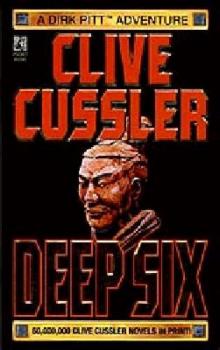 Deep Six
Deep Six Odessa Sea
Odessa Sea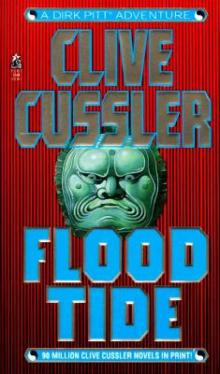 Flood Tide
Flood Tide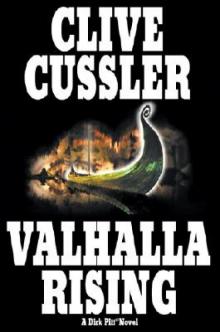 Valhalla Rising
Valhalla Rising Thriller 2
Thriller 2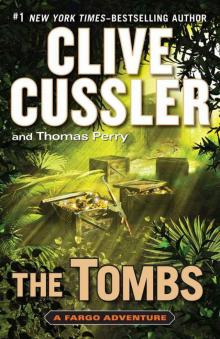 The Tombs
The Tombs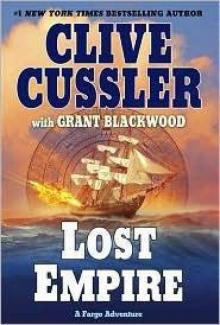 Lost Empire
Lost Empire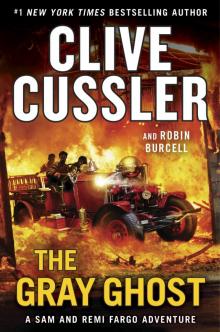 The Gray Ghost
The Gray Ghost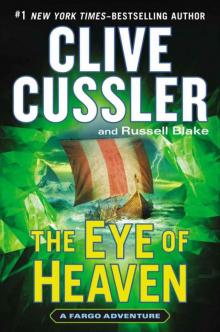 The Eye of Heaven
The Eye of Heaven Polar Shift
Polar Shift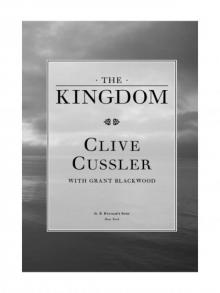 The Kingdom
The Kingdom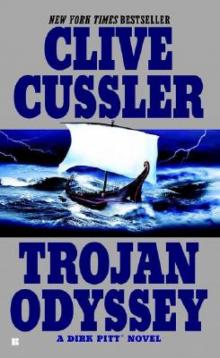 Trojan Odyssey
Trojan Odyssey Shadow Tyrants
Shadow Tyrants Nighthawk
Nighthawk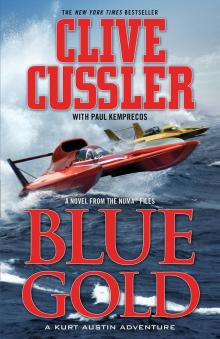 Blue Gold
Blue Gold Serpent
Serpent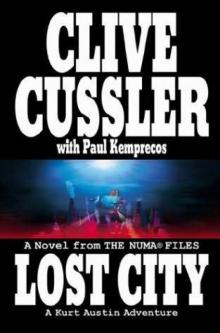 Lost City
Lost City The Gangster
The Gangster White Death
White Death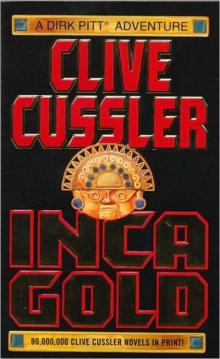 Inca Gold
Inca Gold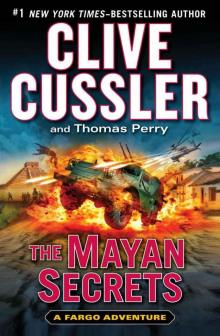 The Mayan Secrets
The Mayan Secrets The Pharaoh's Secret
The Pharaoh's Secret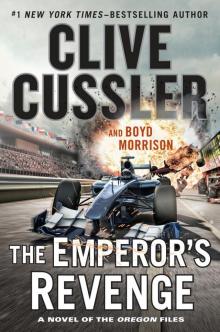 The Emperor's Revenge
The Emperor's Revenge Corsair
Corsair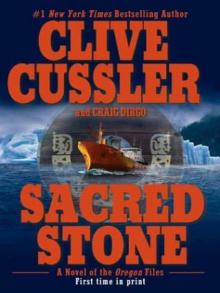 Sacred Stone
Sacred Stone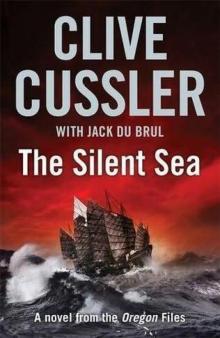 The Silent Sea
The Silent Sea The Rising Sea
The Rising Sea Black Wind
Black Wind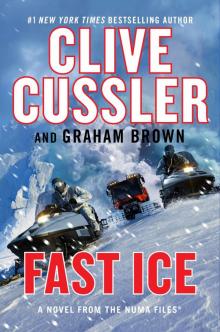 Fast Ice
Fast Ice Ghost Ship
Ghost Ship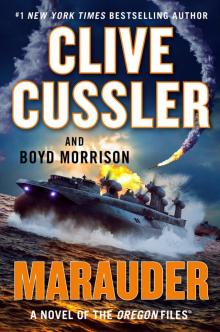 Marauder
Marauder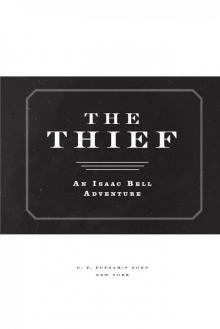 The Thief
The Thief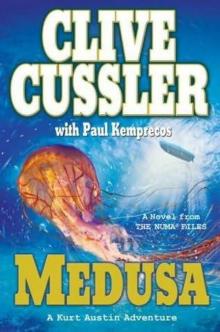 Medusa
Medusa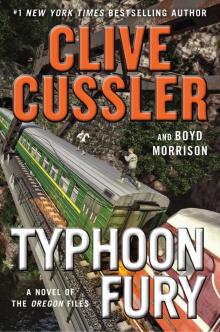 Typhoon Fury
Typhoon Fury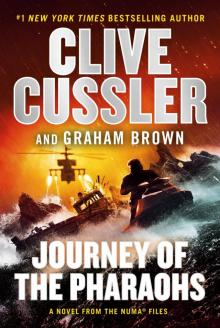 Journey of the Pharaohs
Journey of the Pharaohs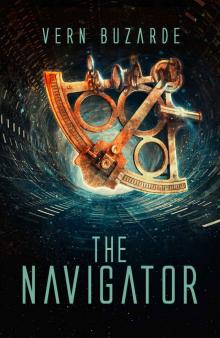 The Navigator
The Navigator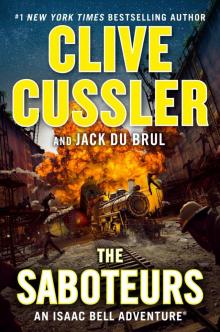 The Saboteurs
The Saboteurs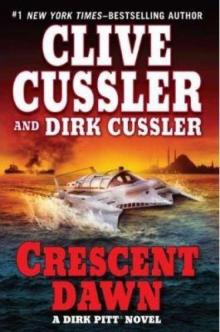 Crescent Dawn
Crescent Dawn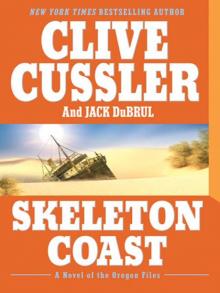 Skeleton Coast
Skeleton Coast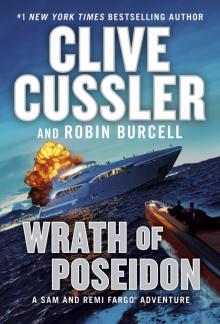 Wrath of Poseidon
Wrath of Poseidon The Mediterranean Caper
The Mediterranean Caper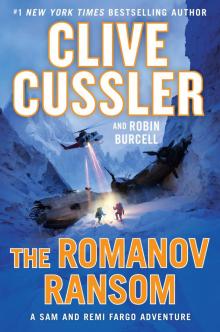 The Romanov Ransom
The Romanov Ransom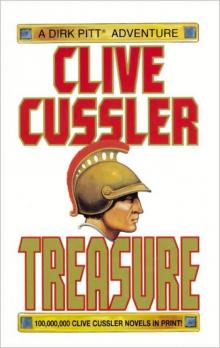 Treasure
Treasure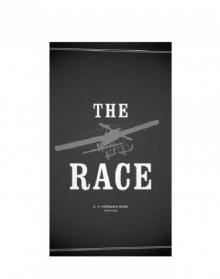 The Race
The Race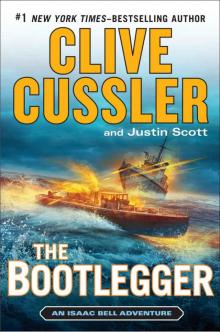 The Bootlegger
The Bootlegger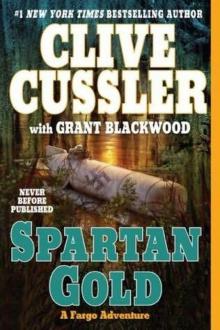 Spartan Gold
Spartan Gold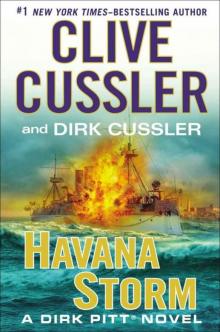 Havana Storm
Havana Storm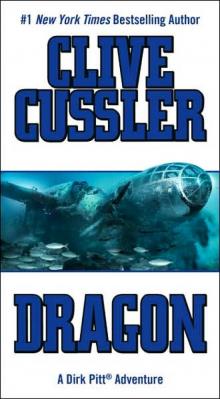 Dragon
Dragon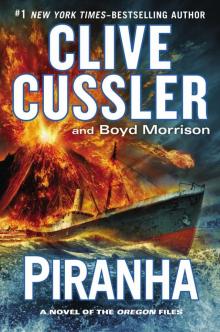 Piranha
Piranha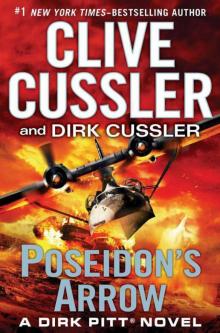 Poseidon's Arrow
Poseidon's Arrow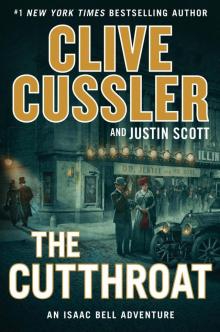 The Cutthroat
The Cutthroat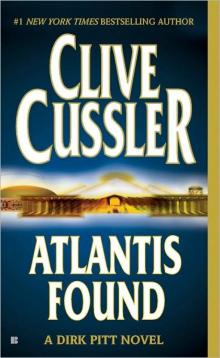 Atlantis Found
Atlantis Found The Jungle
The Jungle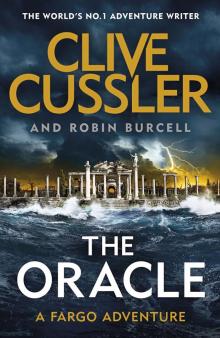 The Oracle
The Oracle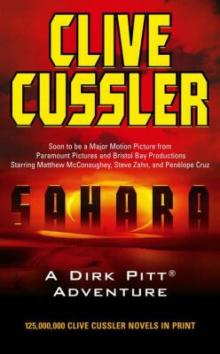 Treasure / Dragon / Sahara: Clive Cussler Gift Set
Treasure / Dragon / Sahara: Clive Cussler Gift Set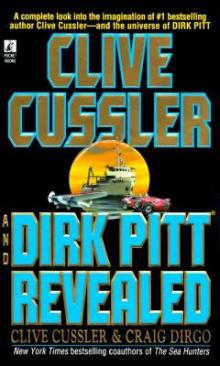 Clive Cussler and Dirk Pitt Revealed
Clive Cussler and Dirk Pitt Revealed The Sea Hunters
The Sea Hunters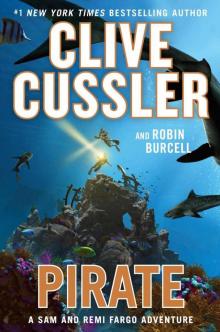 Pirate
Pirate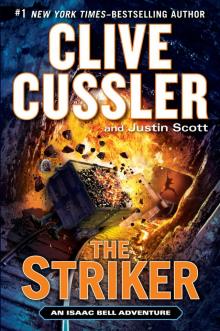 The Striker
The Striker Plague Ship
Plague Ship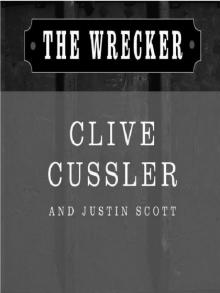 The Wrecker
The Wrecker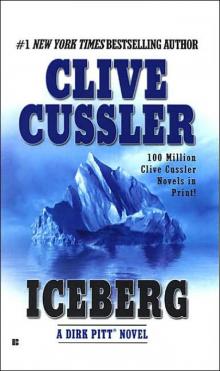 Iceberg
Iceberg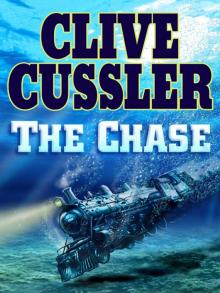 The Chase
The Chase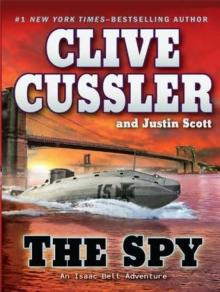 The Spy
The Spy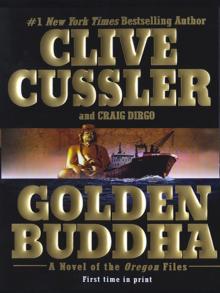 Golden Buddha
Golden Buddha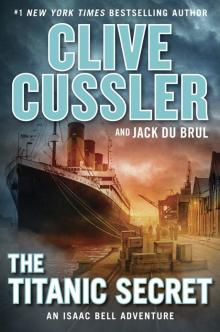 The Titanic Secret
The Titanic Secret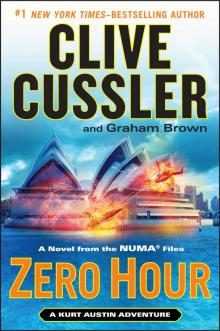 Zero Hour
Zero Hour Fire Ice
Fire Ice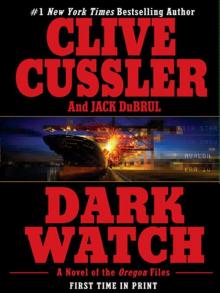 Dark Watch
Dark Watch The Storm
The Storm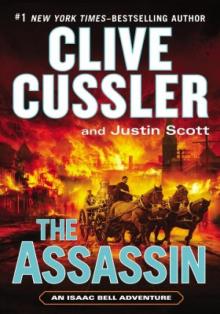 The Assassin
The Assassin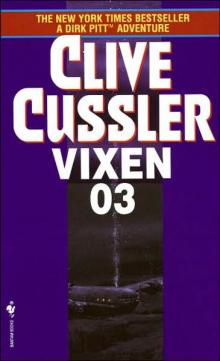 Vixen 03
Vixen 03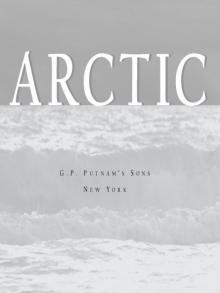 Arctic Drift
Arctic Drift Night Probe!
Night Probe! Cyclops
Cyclops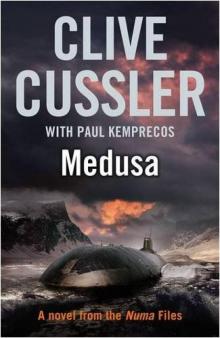 Medusa nf-8
Medusa nf-8 Shock Wave dp-13
Shock Wave dp-13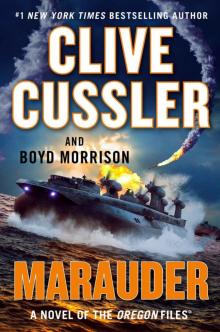 Marauder (The Oregon Files)
Marauder (The Oregon Files)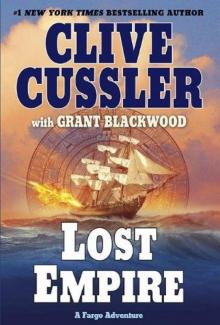 Lost Empire fa-2
Lost Empire fa-2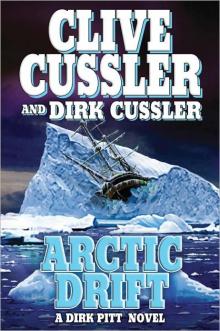 Arctic Drift dp-20
Arctic Drift dp-20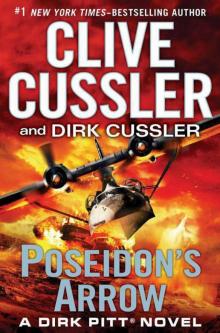 Dirk Pitt 22 - Poseidon's Arrow
Dirk Pitt 22 - Poseidon's Arrow Treasure of Khan dp-19
Treasure of Khan dp-19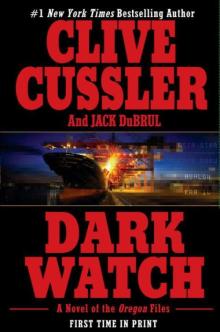 Dark Watch of-3
Dark Watch of-3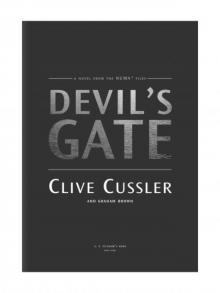 Devil's Gate
Devil's Gate The Sea Hunters II: More True Adventures with Famous Shipwrecks
The Sea Hunters II: More True Adventures with Famous Shipwrecks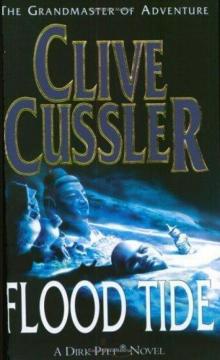 Flood Tide dp-14
Flood Tide dp-14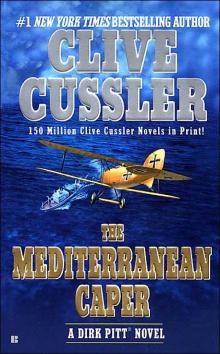 The Mediterranean Caper dp-2
The Mediterranean Caper dp-2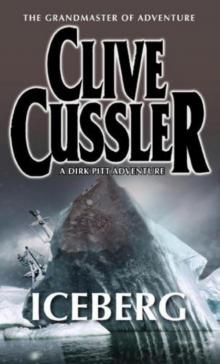 Iceberg dp-3
Iceberg dp-3 Sahara dpa-11
Sahara dpa-11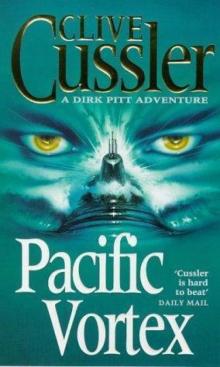 Pacific Vortex! dp-1
Pacific Vortex! dp-1 Deep Six dp-7
Deep Six dp-7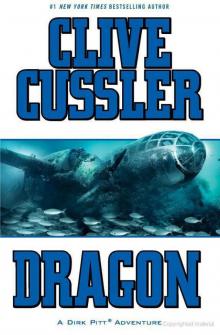 Dragon dp-10
Dragon dp-10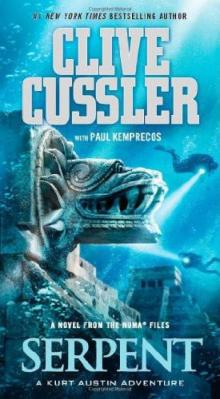 Serpent nf-1
Serpent nf-1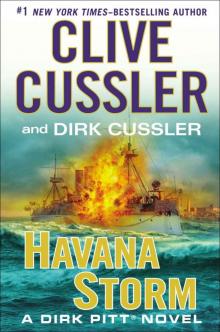 Havana Storm (Dirk Pitt Adventure)
Havana Storm (Dirk Pitt Adventure)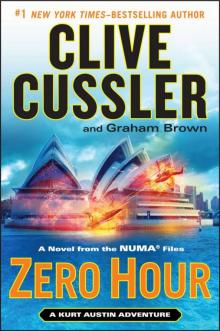 Zero Hour nf-11
Zero Hour nf-11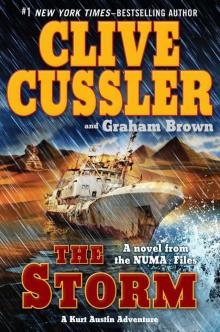 The Storm nf-10
The Storm nf-10 The Thief ib-5
The Thief ib-5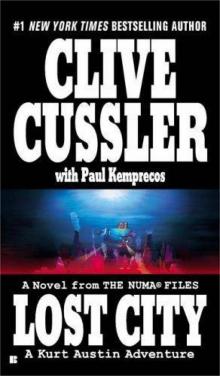 Lost City nf-5
Lost City nf-5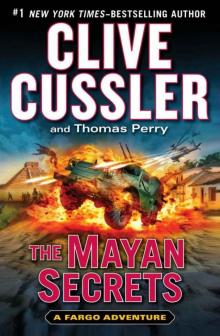 The Mayan Secrets fa-5
The Mayan Secrets fa-5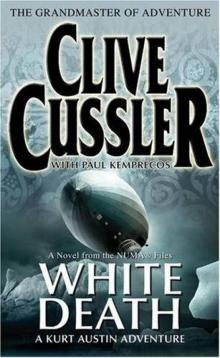 White Death nf-4
White Death nf-4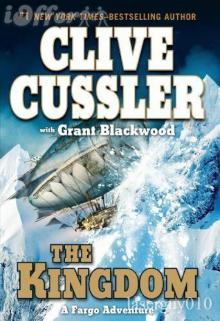 The Kingdom fa-3
The Kingdom fa-3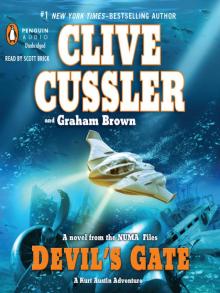 Devil's Gate nf-9
Devil's Gate nf-9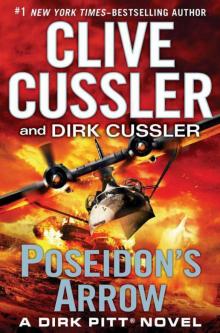 Poseidon's Arrow dp-22
Poseidon's Arrow dp-22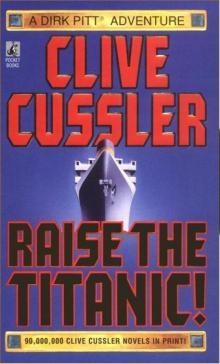 Raise the Titanic dp-4
Raise the Titanic dp-4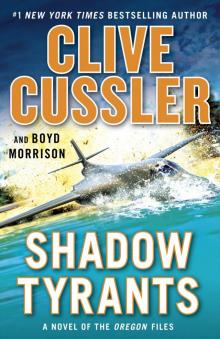 Shadow Tyrants--Clive Cussler
Shadow Tyrants--Clive Cussler Sacred Stone of-2
Sacred Stone of-2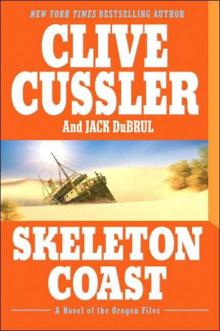 Skeleton Coast tof-4
Skeleton Coast tof-4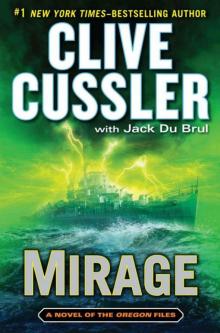 Mirage tof-9
Mirage tof-9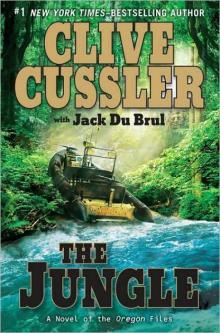 The Jungle of-8
The Jungle of-8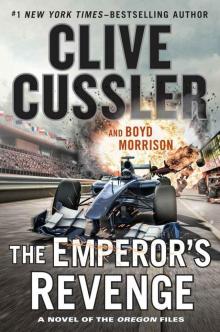 The Emperor's Revenge (The Oregon Files)
The Emperor's Revenge (The Oregon Files)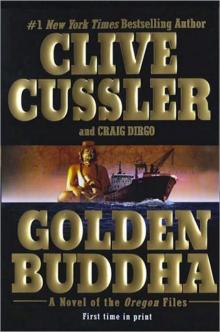 Golden Buddha of-1
Golden Buddha of-1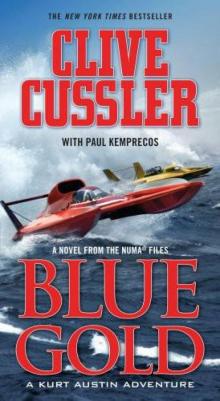 Blue & Gold
Blue & Gold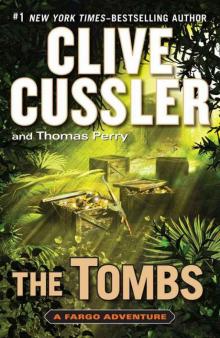 The Tombs fa-4
The Tombs fa-4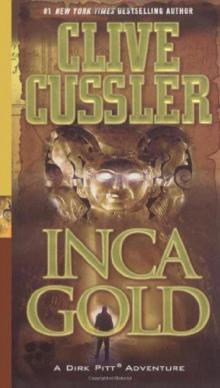 Inca Gold dp-12
Inca Gold dp-12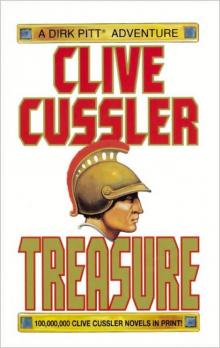 Treasure dp-9
Treasure dp-9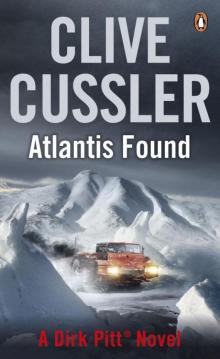 Atlantis Found dp-15
Atlantis Found dp-15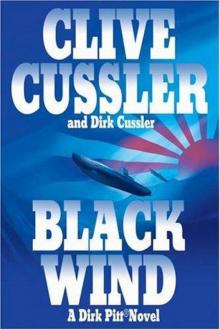 Black Wind dp-18
Black Wind dp-18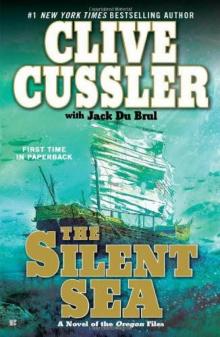 the Silent Sea (2010) tof-7
the Silent Sea (2010) tof-7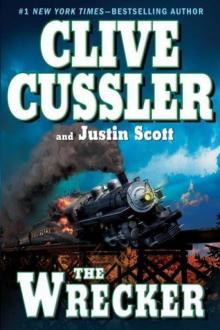 The Wrecker ib-2
The Wrecker ib-2 Fire Ice nf-3
Fire Ice nf-3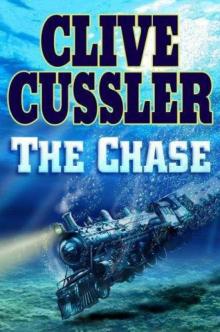 The Chase ib-1
The Chase ib-1 Sahara
Sahara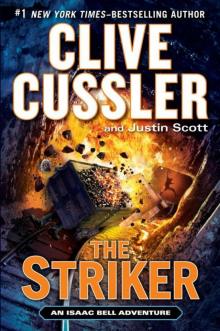 The Striker ib-6
The Striker ib-6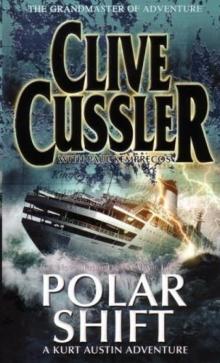 Polar Shift nf-6
Polar Shift nf-6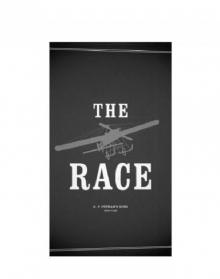 The Race ib-4
The Race ib-4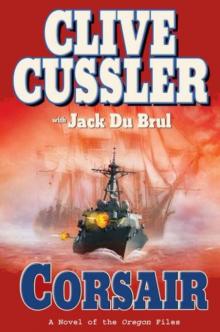 Corsair of-6
Corsair of-6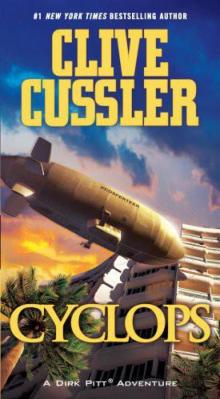 Cyclops dp-8
Cyclops dp-8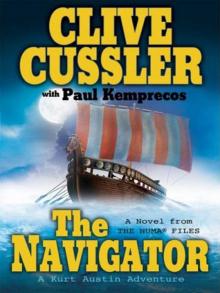 The Navigator nf-7
The Navigator nf-7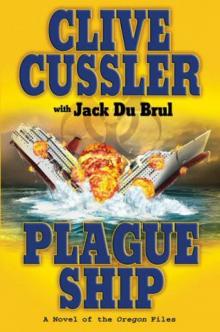 Plague Ship tof-5
Plague Ship tof-5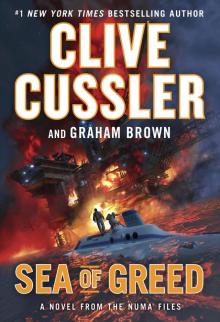 Sea of Greed
Sea of Greed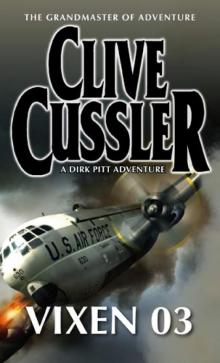 Vixen 03 dp-5
Vixen 03 dp-5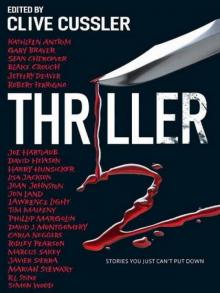 Thriller 2: Stories You Just Can't Put Down
Thriller 2: Stories You Just Can't Put Down